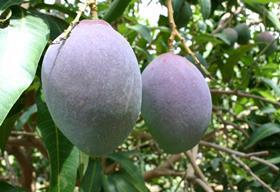
Peru is hoping to make its maiden mango shipments to the Japanese market next month, providing it gets the all clear from a Japanese inspector.
An inspector from Japan’s Ministry of Agriculture, Forestry and Fisheries (MAFF) will visit Peru on 5-12 March, according to Hiroaki 'Don' Okazoe of major Japanese import company IPM Nishimoto.
“If everything is okay after the inspection, Japanese importers can start importing Peruvian mangoes, but how much fruit we’ll be able to handle this first year remains to be seen because the season will finish at the end of March,” he told Fruitnet.com.
IPM Nishimoto has its sights set on becoming one of Japan’s leading mango importers, and Mr Okozoe feels Peruvian mangoes should find a good fit in the market, both in terms of their timing and their varietal focus.
“The Peruvian mango import programme will start in December and go through March,” he said, adding that this is good timing because it will dovetail neatly with supplies already coming into the Japanese market from Brazil and Mexico.
“We’ll start with Brazil from August to November, then move over to Peru from December to March,” he explained. “After that, we’ll take product from Mexico between March and August, so altogether we’ll have a year-round supply to our customers.”
Up until now, Japan has been able to source mangoes from Brazil between December and March, but the Brazilian offer is dominated by Tommy Atkins whereas the market has a preference for Kent. “Peru has Kent and we prefer Kent to Tommy Atkins because it is less fibrous,” Mr Okazoe said.
The protocol for Peruvian mangoes entails hot water treatment, much the same as that for Brazilian mangoes. This is fairly easy to manage, according to Mr Okazoe, who noted that Peruvian exporters are planning to ship most product by sea rather than air – and he cautioned that cost will be a key factor in their success. “If Brazilian mangoes turn out to be cheaper, we’ll continue to handle them alongside Peruvian mangoes,” he said.
Indeed, Japan’s flagging economy has taken its toll on sales of higher value fruit categories such as mangoes, according to Mr Okazoe. “Expensive fruits are not selling well here, so we haven’t seen much growth in demand for mangoes over the past few years,” he noted.
Japan’s import statistics show that mango imports have plateaued at 12,000 tonnes over the past five years, after climbing from 9,000 tonnes in 1999. Nevertheless, the Kent, Hayden and Tommy Atkins varieties, which are predominately sourced from South America, have been growing their share of the mango import market, according to Mr Okazoe.
“We call these varieties apple mangoes because they’re round with a red blush,” he said. “On the other hand, you have yellow mangoes such as the Manila Super from the Philippines and the varieties from Thailand. During the March to May period, we’ve seen an increase in shipments from Mexico and a decrease from the Philippines, whose mangoes are not always sweet enough.
“Apple mangoes are gaining a greater market share. They probably control more than 50 per cent, with the rest being yellow mangoes, plus a few from Australia.”
From a consumption point of view, the timing of Peruvian mango imports between December and March is both good and bad, he believes. “December is good as we can capture the Christmas sales,” pointed out Mr Okazoe. “March is okay, but January/February are not so good, partly because it’s so cold here.”
With Mexico facing a shortage of mangoes for this season, there could be more demand for Peruvian suppliers to stretch out supplies in this first year of access. According to industry data, Mexico ranks as the largest supplier of mangoes to Japan, shipping around 5,600 tonnes annually.






No comments yet